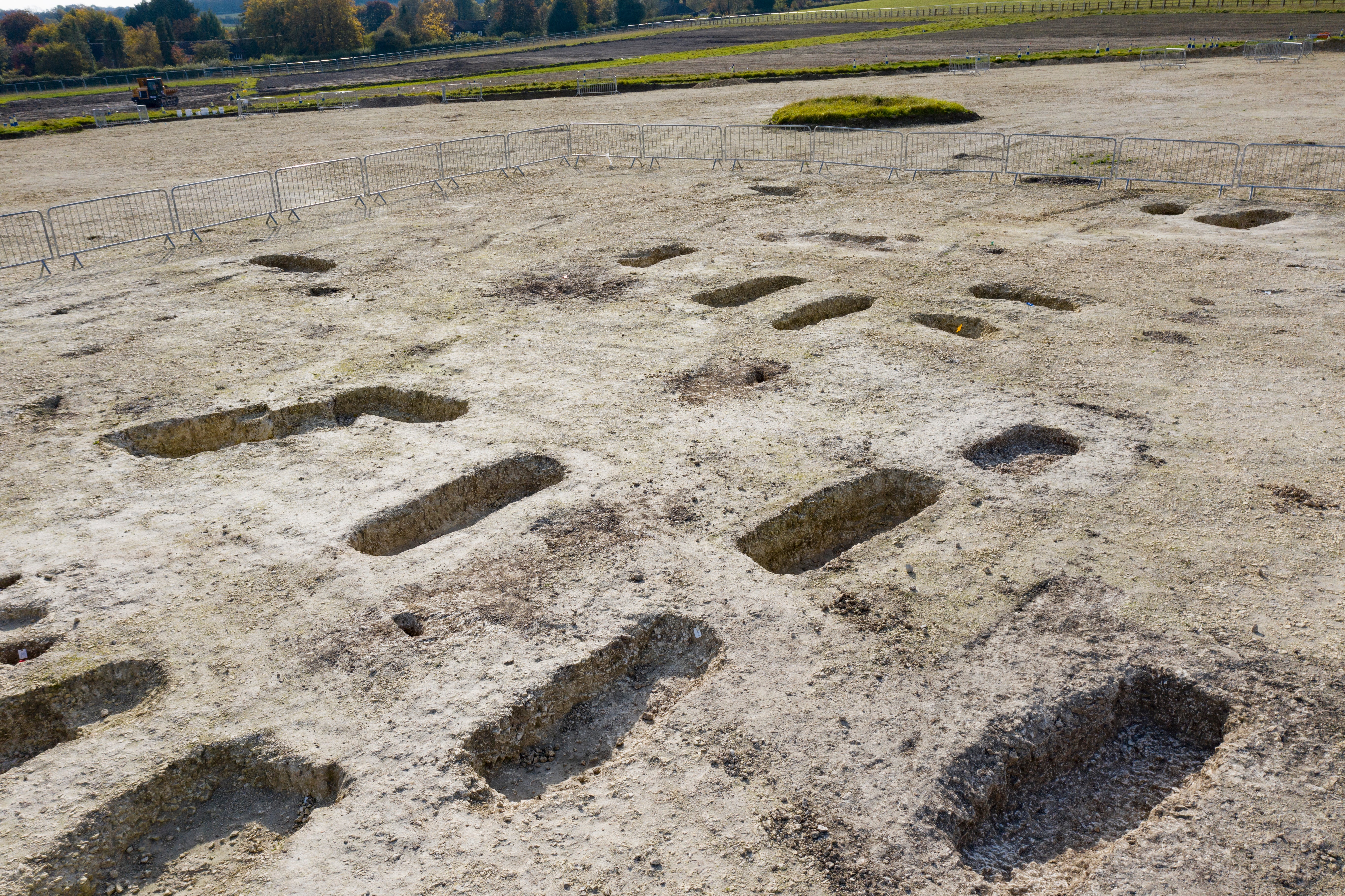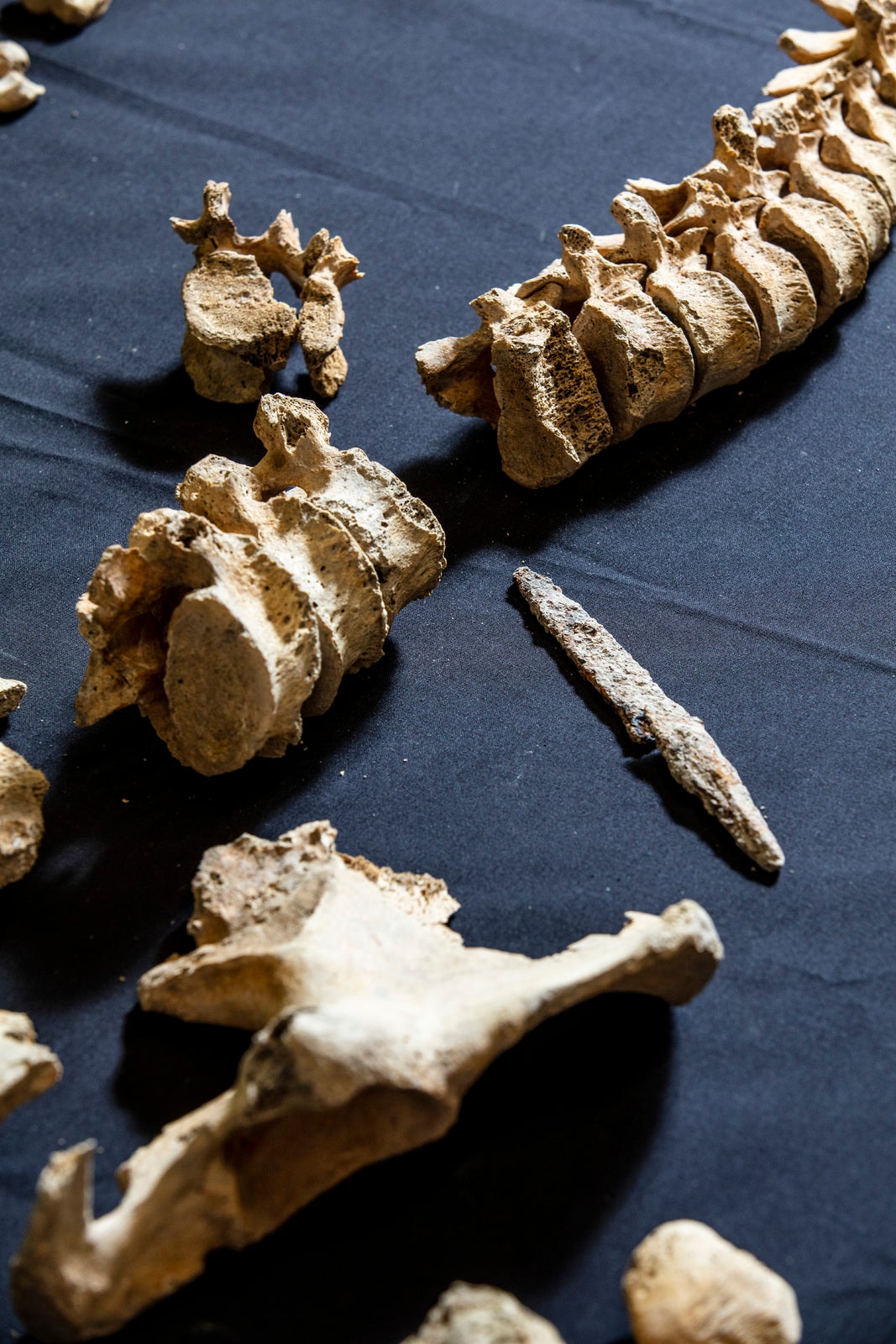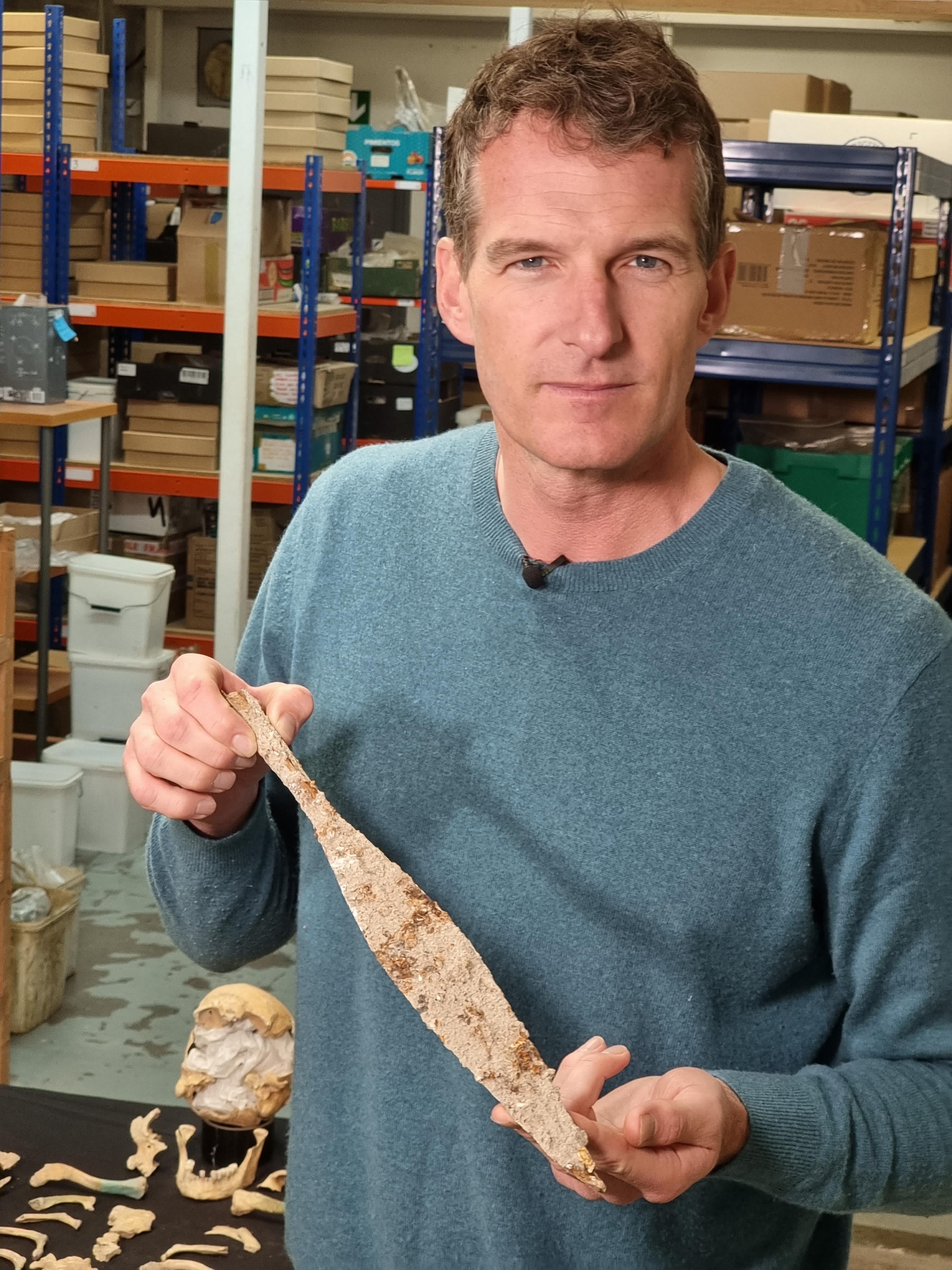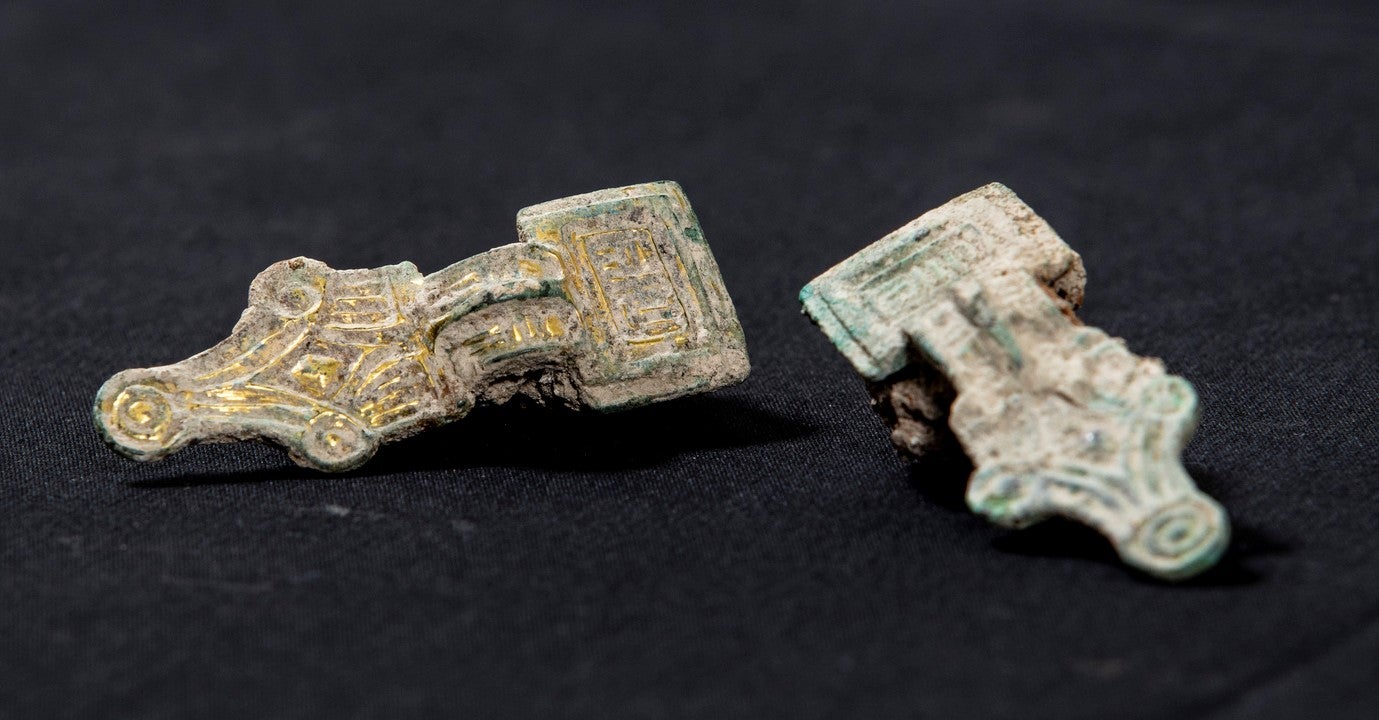Anglo-Saxon burial site with nearly 140 graves found along HS2 route
Man found with weapon believed to have killed him, still in his skeleton

Your support helps us to tell the story
From reproductive rights to climate change to Big Tech, The Independent is on the ground when the story is developing. Whether it's investigating the financials of Elon Musk's pro-Trump PAC or producing our latest documentary, 'The A Word', which shines a light on the American women fighting for reproductive rights, we know how important it is to parse out the facts from the messaging.
At such a critical moment in US history, we need reporters on the ground. Your donation allows us to keep sending journalists to speak to both sides of the story.
The Independent is trusted by Americans across the entire political spectrum. And unlike many other quality news outlets, we choose not to lock Americans out of our reporting and analysis with paywalls. We believe quality journalism should be available to everyone, paid for by those who can afford it.
Your support makes all the difference.Archaeologists working on an HS2 site have discovered a burial ground containing nearly 140 graves, including a skeleton with a weapon still embedded in it.
The site, in Wendover, Buckinghamshire, contained 138 graves, with 141 regular burials and five cremation burials, which makes it one of the largest Anglo-Saxon burial grounds ever uncovered in Britain.
A skeleton, thought to be male, was found with a sharp iron object embedded into its spine, which experts believe may have caused or factored into his death.
The man was thought to be between 17-24 at the time of death and was examined by specialist osteologists who believe he was stabbed with the weapon from the front, before it embedded in his spine.

Items from the 5th and 6th century were found, including 89 brooches, more than 2,000 amber beads, 51 knives, 40 buckles, 15 spearheads, and various other metals and raw materials used to make the artefacts.
The discoveries have been filmed for historian Dan Snow’s streaming service History Hit.
Speaking on his podcast, the presenter said: “By studying the things our forebears have left in the ground, their glass, jewellery, weapons and even their bodies, we can build a rich picture of a dynamic and vital period of our history.
“This stunning set of discoveries on the HS2 route can tell us more about how our predecessors lived, fought and ultimately died.
“It is one of the best and most revealing post Roman sites in the country and it was thrilling to join the team as they uncovered their wonderful finds.”

A team of around 30 field archaeologists from INFRA JV, working on behalf of HS2’s Enabling Works Contractor, Fusion JV, completed field work at the site in 2021, and also found evidence of Neolithic, Bronze Age, Iron Age and Roman activity.
Of note, a pair of small square-headed brooches were excavated, which are a miniature form of the great square-headed brooch, such as the famous Chessell Down Brooch on display at the British Museum.
Two glass cone beakers that would have been used for drinking liquids such as wine were also found and suggest those buried may have had access to fine beverages from abroad.
The beakers have decorative trails in the glass which are comparable to the “Kempston” type cone beaker, uncovered in Bedfordshire in 1891, with one currently on display in the British Museum.
A female body was found buried with a vast array of high quality goods, such as a complete ornate glass bowl made of pale green glass, multiple rings made of copper alloy, a silver “zoomorphic” ring, brooches, discs, iron belt fittings and objects made of ivory.

A number of items likely used for grooming were also found, including toiletry sets with ear wax removers and toothpicks, tweezers, combs and even a cosmetic tube that may have been used as eyeliner or similar.
Mike Court, lead archaeologist for HS2 Ltd, said: “As we near the end of our archaeology field work on Phase One of HS2, we are just at the beginning of our understanding of how the discoveries will improve our historical knowledge of Britain.
“The archaeological finds made at this site in Wendover will not only be of interest to the local community but are of national importance, providing a valuable insight into life in Anglo-Saxon Britain.”
Dr Rachel Wood, lead archaeologist for Fusion JV, said: “This significance of this site for our historical and archaeological understanding of Anglo-Saxon Britain is huge.
“It is not a site I would ever have anticipated finding – to have found one of these burials would have been astonishing, so to have found so many is quite unbelievable.”
The discoveries will be featured in a programme on Dan Snow’s History Hit released on June 16.
A programme of assessment and analysis will be carried out over the next few years at the location to attempt to find more insight into the stories of the people buried at the site.